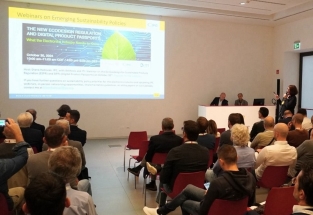IPC Grants Program: A Year of Strategic Growth and Momentum
by Nyron Rouse, Director of Government Grants and Strategic Funding
As we enter the final quarter of 2024, IPC is proud to reflect on a year of significant progress and strategic advancement in our government grants and funding initiatives. Since the program’s launch in July 2023, we’ve explored major funding opportunities, forged key partnerships across the electronics sector, and laid a strong foundation for long-term success. Our efforts this past year are setting the stage for impactful results and future growth.

In just over a year, IPC has applied for over $37.4 million in grants, collaborating with industry leaders and positioning ourselves as a competitive player in critical projects. While we await responses on several proposals, our ongoing efforts are yielding valuable partnerships and increasing IPC’s visibility as an organization committed to driving optimization and strategic growth. We are optimistic about the remainder of 2024 as we continue to cultivate these opportunities and build on the momentum we’ve generated.
A significant part of our progress stems from our focus on change management, which has allowed us to streamline internal processes and strengthen our ability to compete for funding. For example, we are adopting a centralized grants management system to improve tracking and compliance, and we are aligning our submission protocols with industry standards, ensuring our proposals are more competitive and easier to manage across the organization. These steps result in more efficient workflows and a stronger overall positioning for upcoming funding opportunities.
Looking ahead to 2025, we are preparing to launch new training programs aimed at equipping our team and members with the tools to navigate the complexities of grants management and maximize future opportunities. These programs will cover essential skills such as budget preparation, compliance with 2 CFR 200 (Uniform Guidance), effective reporting, and proposal writing strategies, ensuring that IPC remains competitive in an increasingly complex grants landscape. Our commitment to ongoing professional development will help us seize future opportunities while maintaining the highest standards of compliance and effectiveness.
As we continue to build and refine our strategy, IPC is dedicated to securing the funding that drives impactful projects across the electronics industry. We are excited about what lies ahead and look forward to keeping our members and stakeholders informed and engaged as we move forward into a new phase of growth and opportunity.
Stay tuned for the launch of our grants landing page, where you’ll be able to track our progress, discover new opportunities, and follow the evolution of IPC’s grants program.
For additional information on IPC's government grants and funding initiatives, please reach out to me at NyronRouse@ipc.org.



